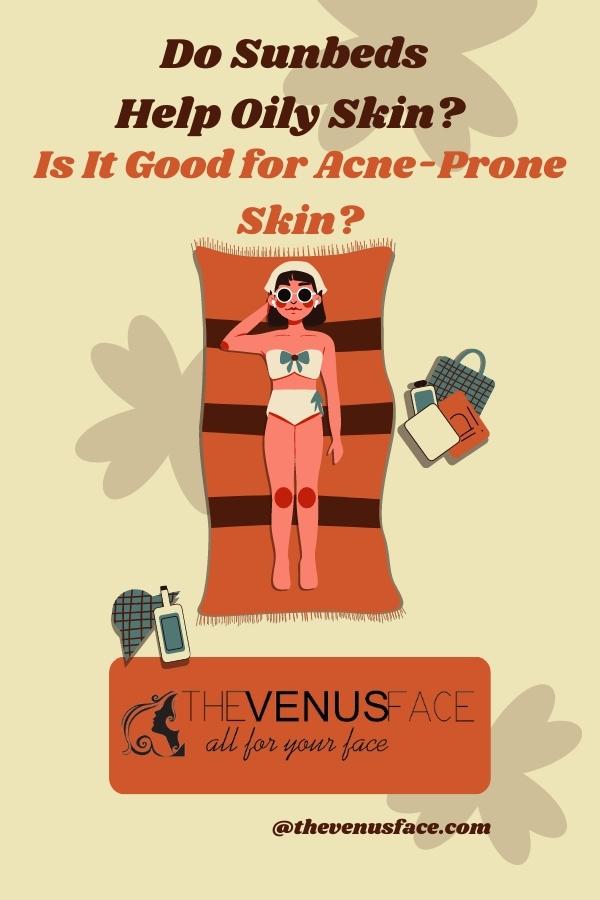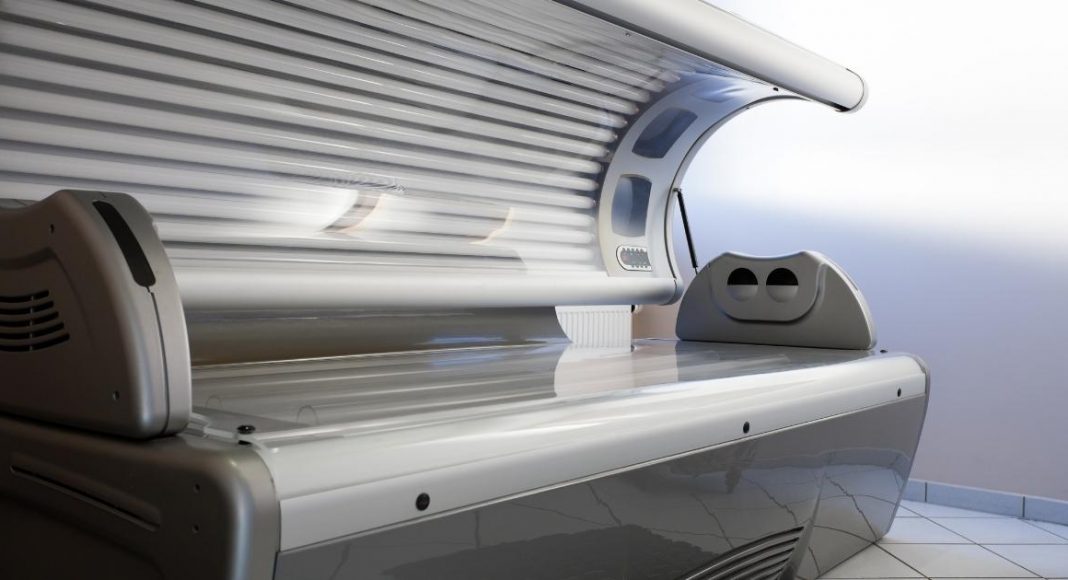Do sunbeds help oily skin? Learn more in this post.
Tanning with a sunbed is the process of turning the skin brown. Sunbeds create a balanced combination of UVA (ultraviolet A) and UVB (ultraviolet B) light. Oxidation by UVA is responsible for the tanning process, which causes melanin to be generated in the skin. Melanin synthesis is stimulated by UVB rays, causing the skin to become darker.
If you don’t have time but want to look tanned, then sunbed is the closest alternative for you. Tanning with a sunbed will give you an even, attractive brown color within only a few hours. Sunbeds are very popular among people who don’t have time or desire to get tanned through sunlight exposure.
There are many other benefits of sunbeds such as:
- Increase vitamin D levels in your body.
- Helps to treat acne, vitiligo, and other skin conditions.
- Treat Seasonal Affective Disorder (SAD)
Whatever, do sunbeds help oily skin?

Is tanning bed good for oily skin?
There is not enough research to conclude whether sunbeds are good or bad for oily skin. The benefits of UV light from the sun and from a sunbed outweigh the risks to your skin, but it’s still not good for you.
People with oily skins must use sunscreen on a daily basis! Sunbeds can be very dangerous if used without taking adequate steps to protect yourself against the harmful ultraviolet rays. It is well known that UVA radiation penetrates deep into your skin, damaging collagen fibers and cells – this makes you more likely to develop serious conditions.
Therefore, if you have oily skin, consider very carefully before using a sunbed.
More: Top Korean Cushion Foundations for Oily Skin
Do sunbeds make your skin oily?
Yes, some people do notice their skin becomes oilier after using a sunbed. This is because the UV rays stimulate the sebaceous cells in your skin, which produce more oil. If you develop acne or other problems with oily skin after tanning, try to limit your exposure to UVA light.
Know that tanning beds emit both UVA and UVB rays, so it’s important to get an idea of how powerful they are. With that being said, if you have oily skin and still want to use a sunbed for cosmetic reasons, keep in mind that it may worsen your oily skin.
More: Top Drugstore Powder Foundations for Greasy Faces
Do sunbeds clear your skin?
Not really. At first, dark spots and blemishes are less visible on the skin after tanning, but it’s only temporary. Sunbeds enhance the appearance of your skin by providing an even brown color, which can help to hide some flaws. However, in the long term, this temporary effect will surely turn against your skin.
If you want to have clear skin, there are many other options you can try. Consider getting professional help to clear your skin, such as through microdermabrasion. Or if you want to do it at home, then a good skincare routine will do the trick.
Are tanning beds good for (back) acne?
No, tanning beds are bad for acne. This is because the UV rays make your skin dry and less oily, which at first sounds perfect for acne treatment. However, after that, your skin will react to the sun damage by producing an excess of oil, which gives way to breakouts, and more acne.
The reality is that tanning beds are not good at all for acne treatment. Get some advice about effective acne treatments instead, such as Accutane (isotretinoin).
More: Is Steaming Good for Oily Skin?
Do sunbeds get rid of stretch marks?
It is a misunderstanding that sunbeds can get rid of stretch marks. It’s not possible to remove stretch marks. In fact, stretch marks cannot be tanned, thus tanning beds cannot get rid of your stretch marks. Other than that, there is no evidence that tanning beds will fade the color of stretch marks.
If you want to get rid of stretch marks, there are many other options. Consider using a stretch mark cream, laser treatment, or other procedures.
Can you use tanning bed lotion in the sun?
The difference between indoor tanning lotions and outdoor tanning lotions is mainly in the ingredients they contain. Indoor tanning lotions don’t have any sunscreen in them, but most of the “outdoor” products do.
Besides that, if you go swimming in a pool or in the ocean, it’s difficult to keep indoor lotions on your skin. They’ll wash off if you submerge yourself for an extended period of time.
Indoor tanning lotions are often greasy and don’t seem nice on your skin when you’re out and about in public.
Since outdoor sunscreens are not expensive, it’s better to have just one or two bottles of tanning lotion for indoor use, and a separate bottle/tube of sunscreen for outdoor use.
More: List of Best Bronzers to Darken Your Skin, According to Customers
Final thought
There are benefits and risks of sunbeds, so you need to weigh them against each other before using a sunbed. For people with oily skin, a tanning bed is not recommended because it can aggravate the skin’s oiliness.
If you’re thinking of trying a tanning bed for cosmetic reasons, remember that they’re bad for acne treatment, and don’t help to clear your skin or get rid of stretch marks.
Please be responsible when using sunbeds. Use protective devices such as eyewear and tanning creams. And if possible, natural tanning outside is always better than using a sunbed.
References: https://www.refinery29.com/en-us/tanning-bed-benefits-risks


